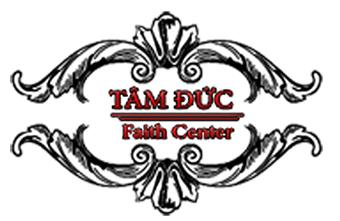dating
Icelandic women strike for economic and social equality, 1975 Global Nonviolent Action Database
Women’s workshops for making woolen textiles have been found in Iceland. Textiles were used as a form of currency in medieval Iceland, and there were regulations as to what was legal tender in the oldest (11th-century) part of the Grágás laws. On this Wikipedia the language links are at the top of the page across from the article title. Fortunately, according to Aas, Icelandic women are finding ways to resist limited ideas of beauty in their everyday lives, starting with the example they’re setting. “Many of us choose to be inspired by women who respect their bodies and have a happy balance with family, work, spirituality, and health,” she says.
In 2018, Iceland made unequal pay for equal work illegal; companies and government agencies with over 25 employees face heavy fines. In 1968, the Arctic Ocean herring fishery collapsed as a direct result of overfishing. The once-plentiful Atlantic herring was on the verge of extinction, and Iceland’s economy took a sharp tumble. Fish processing plants were abandoned, boats sat idle in harbors and docks no longer hosted lively gatherings. But even as many herring girls returned to domestic duties, their impact on Icelandic politics and society continued to resonate.
- NPR’s Leila Fadel speaks with Eliza Reed, the first lady of Iceland, about her new book and why her country is a great place to be a woman.
- There were no shifts or pre-scheduled hours.” As vessels approached, local boys ran or biked from house to house, knocking on windows to wake the women up.
- These extraordinary women have shaped the history and culture of Iceland and have certainly inspired others.
- Ásta told me that one of the advantages she brings to the queer women’s history project is that she has a huge network of women that she can talk to about recent history.
On that day, 90 percent of the female population in Iceland didn’t show up for work, didn’t change a dirty diaper, didn’t pick up an iron, or step into the kitchen. The day has been referred to as the “Long Friday” by many men, because it was the first time they had to take care of their children and do household tasks like cleaning and cooking, and it was found to be a very long day. Businesses had to close because men had to stay home with their children since many facilities such as schools were closed due to the lack of workforce that day.
Enter the herring girls, who were referred to as “girls” no matter their age. They, too, came by the thousands from across Iceland, fulfilling a role so crucial that the industry couldn’t have succeeded without them. Iceland passed a law in 2010 requiring company boards to have a minimum of 40% of women or men. In 2021, women occupied about 42% of managerial roles and 40% of parliamentary positions in Iceland. Fortunately, in Iceland, there’s a ministry to complacency on gender equality. The ministry of gender equality, as in Harry Potter, is magic.
Women’s suffrage
Iceland’s largest maritime museum, it occupies five former fishery buildings, including a salting station that also served as a women’s dormitory, a fish meal and oil factory, and a reconstructed boathouse. Overall, the Nordic country has a near perfect score on the gender-equality scale. For eight years, the World Economic Forum’s Global Gender Gap Report ranked Iceland No. 1 on its list of countries actively closing gaps in gender equality.
Icelandic CrossFit Women – Björk Odinsdóttir
And, you know, this is also an ongoing issue that we need to be tackling and need to be dealing with. But hopefully, we’re moving forward with that a little bit more. So it’ll be really interesting to follow what happens in that case. Iceland’s first women’s organization was founded in the countryside in 1869. It’s focus was to foster more unity and cooperation among women in the region. They also collected money to buy a knitting machine that all members could use. You might have heard of some of the women I’m featuring but there are others that you have probably never learned about.
“To the girls, to the women, to the mothers, to the daughters, who hear the music bubbling within, please speak up. We need to hear your voices.” Visit our website terms of use and permissions pages at for further information. NPR’s Leila Fadel speaks with Eliza Reed, the first lady of Iceland, about her new book and why her country is a great place to be a woman.
The Daughters of Reykjavik are a feminist rap collective who rap about gender issues. For centuries, this seafaring nation’s women stayed at home as their husbands traversed the oceans.
She became founding chairperson of the women’s organisation Kvenfélagasambands Íslands in 1930. Next is the random fact of the episode and I will end off with the Icelandic word of the day. I found a lot of information on the Women’s history Archives website. The Archives was founded in January of 1975 by Anna Sigurðardóttir, Else Mia Einarsdóttir and Svanlaug Baldursdóttir. Since 1996 it has been a special entity within the National Library of Iceland. There is so much information there and I will have links to the website in the show notes if you want to check it out. Her report from Reykjavik, On Assignment, airs at 10.40pm on Tuesday on ITV.
Subscribe to our weekly newsletter
Women had been all but absent from pre-crisis banking boards; after the crisis, they were appointed to the new boards, and two-thirds of the bank managers appointed after at this source https://thegirlcanwrite.net/icelandic-women/ nationalization were female. Women were also more successful in running for political office, with the proportion of women in parliament rising to a record 43%. In 1987 Icelandic fathers were given the right to share some of the mother’s six month family entitlement.
There were no shifts or pre-scheduled hours.” As vessels approached, local boys ran or biked from house to house, knocking on windows to wake the women up. For women who weren’t indentured, life still revolved around domestic chores and was largely rural, as sheep-rearing was the largest industry on the island. “These women were used to being home alone all year round, cleaning, cooking and caring for their families,” says Elefsen. Within a few years, Icelanders had not only mastered the same high-yield fishing techniques used by the Norwegians but also perfected their own.

